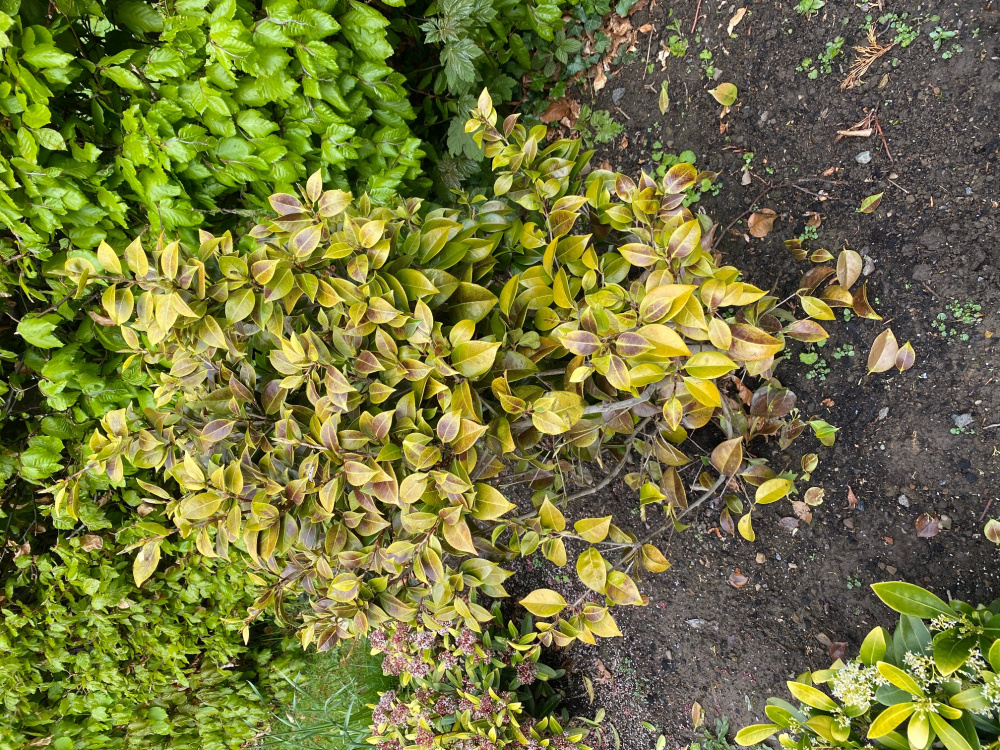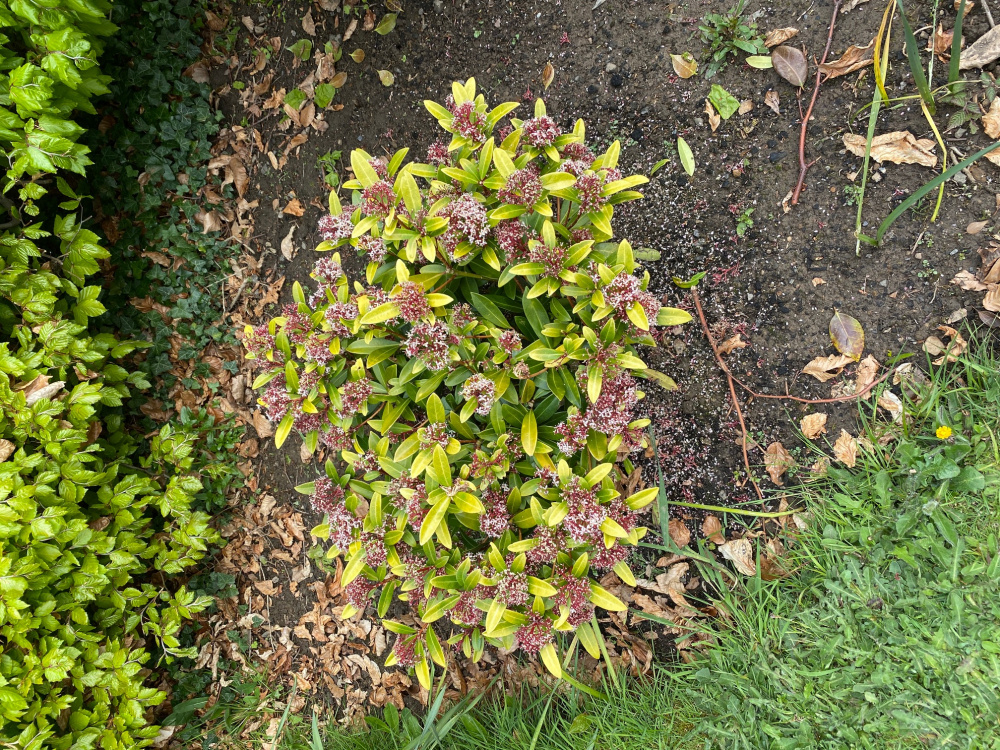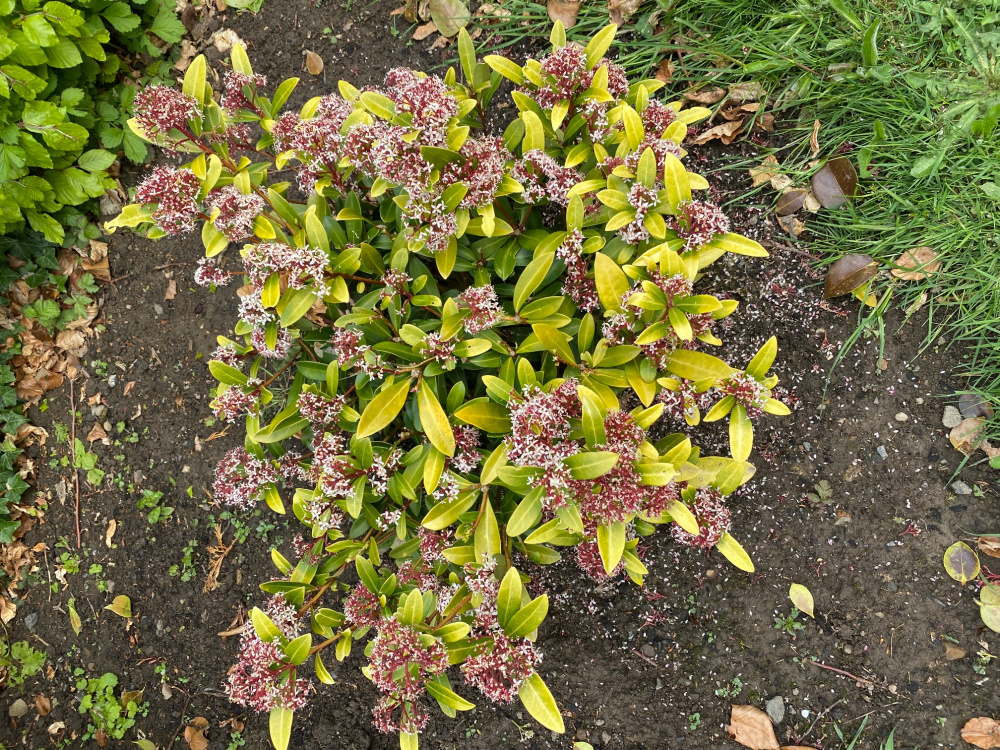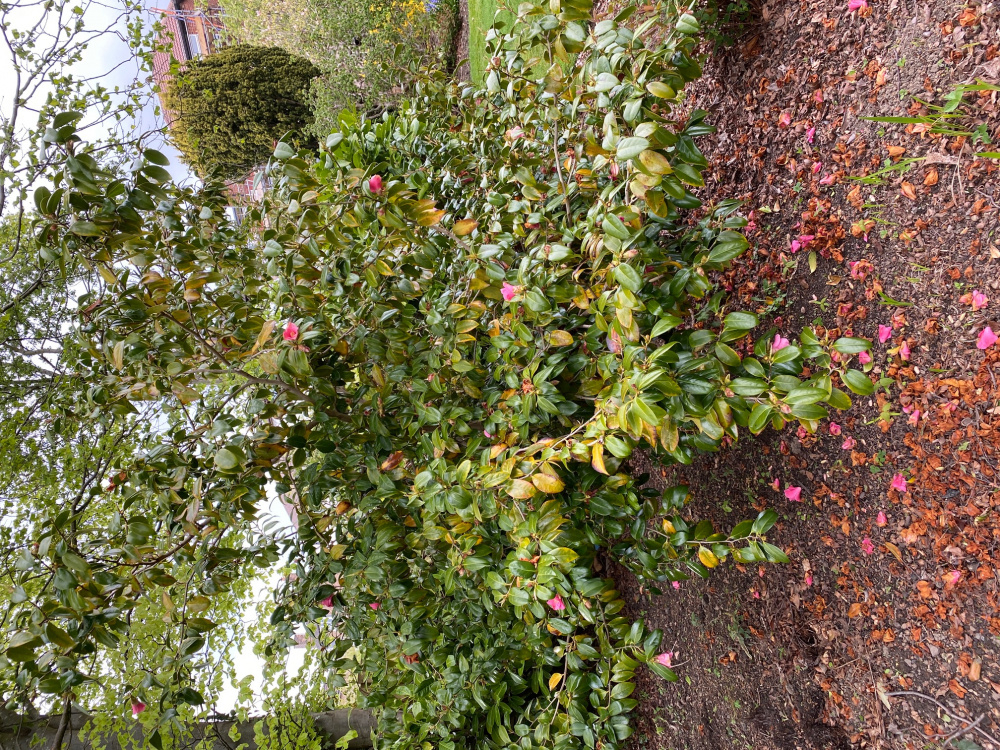This Forum will close on Wednesday 27 March, 2024. Please refer to the announcement on the Discussions page for further detail.
Skimmia and Camellia with yellow leaves - help needed
Hello,
First post so please be kind!
I have a small semi-circular bed with three Skimmia and one Camellia in it. All plants are displaying yellow leaves.
Pictures show the three Skimmia and Camellia in that bed and another (larger) Camellia which is also looking a bit sorry for itself.
The first picture is of the treatments I have used (to no effect) Calcium for the Camellias and the Ericaceous for the Skimmia (sorry that the pictures are sideways - don't know how to sort that)






Any suggestions?
Kind regards
BJ
First post so please be kind!
I have a small semi-circular bed with three Skimmia and one Camellia in it. All plants are displaying yellow leaves.
Pictures show the three Skimmia and Camellia in that bed and another (larger) Camellia which is also looking a bit sorry for itself.
The first picture is of the treatments I have used (to no effect) Calcium for the Camellias and the Ericaceous for the Skimmia (sorry that the pictures are sideways - don't know how to sort that)






Any suggestions?
Kind regards
BJ
0
Posts
Skimmias are not fussed about acidity or alkalinity but their foliage will go yellow if the soil is poor or they have insufficient water if planted in full sun. The Epsom salts trick will help yours.
It's been a cold, dry and windy spring and that won't help either plant so give them both a couple of good drinks or 15L of water with 15ml of Epsom salts mixed in. Pour it slowly so it sinks in. Once they have been well watered, you need to give them a mulch of soil improver such as well-rotted garden compost or manure or specialist conditioner for ericaceous plants. This will help retain the moisture and also improve soil fertility.
Your camellia is a plant from Monsoon regions so make sure it doesn't go thirsty from July into autumn as this is when it sets the flowers for next spring. A good soaking once a week is better than little dribbles which just encourage roots up to the surface where they fry.
Mulching with bark will also help them as it suits these shrubs when broken down, and also helps retain some moisture. They'll possibly be competing with each other and the grass for moisture too if you're in a drier area.
They also perform best in a shadier location if you don't have the perfect soil and plenty of rain, so if they're in a very light, bright or sunny spot, that makes it harder for them to do well
I live in west central Scotland - not where that photo is...
The four smaller plants are against a N-S running beech hedge on the eastern side of the garden. The garden itself faces south so they are in full sun from around midday to dusk.
Semi-circular bed is on left-hand side in this picture. The large camellia is on the right in front of the greenhouse.
Regarding mulching, we should have some well rotted compost that I could apply.
The better the condition of the soil - ie more moisture retentive, the better the shrubs will be.
Foliar feeds should never be applied in sunny conditions.
I've never had to test the soil here, or in any garden I've had, so I can't help with that. It's largely neutral to acidic here. If you look at the type of planting that thrives in your area, that will help indicate the pH.
In any case, plenty of organic matter at regular intervals. Just keep the main trunks of the plants clear.
I live in west central Scotland - not where that photo is...
There's certainly a lot of competition from the hedge. I'm not sure exactly of the Camellia's location, but again, there's a lot of mature planting there, so nutrient levels could be low.
Plenty of organic matter though - it will always benefit all of them. You can add it at any time of year as it will break down and improve the soil quality. Mulching with bark would be good in autumn into winter, when you can be sure of the moisture in the soil, and you can always top it up in late winter too.
I live in west central Scotland - not where that photo is...
Fairygirl - same picture but plants identified for you
Kind regards
BJ
Semi-circular bed is around 10' 3" (312cm) from top to bottom (along hedge) and sticks out some 5' 2" (58cm) from the hedge.
Plants are spaced around 3' (92cm) apart.
Just tested the soil pH in the bed and it seems to be around pH6
Should it be more acidic than this?
BJ
They'll need a lot of water to counteract the competition from the hedge and each other. The grass too.
I was slightly confused by the camellia in a previous post, until I realised you were talking about another one near the greenhouse
I live in west central Scotland - not where that photo is...